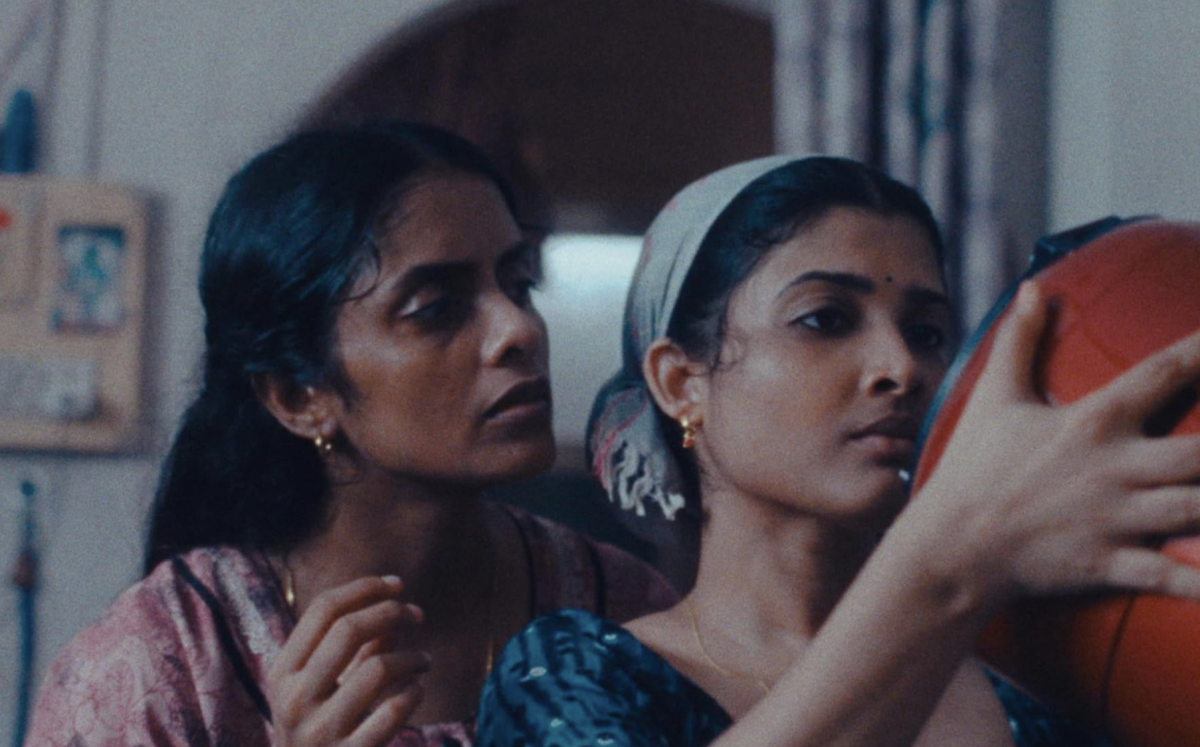Filmmaker Payal Kapadia begins her first narrative film, “All We Imagine as Light,” observing. Bringing in her documentary roots, she focuses on the streets of Mumbai through the lens of a passing bus. All captured in the frame are people packed together, rushing by headed to work and the loud city noises. The film then pivots from an observational lens to an intimate look into womanhood in the metropole.
Winning the Grand Prix prize at this year’s Cannes Film Festival, “All We Imagine as Light” is Kapadia’s follow-up to her breakout documentary “A Night of Knowing Nothing.” The film follows three women: Prabha (Kani Kusruti) is a middle-aged Malayali nurse who longs for her arranged husband in Germany. Anu (Divya Prabha) is her younger roommate and has a romantic affair with a Muslim man, Shiaz (Hridhu Haroon), which causes drama due to their religious differences. Parvaty (Chhaya Kadam) is an older cook at their hospital who, after a rich builder decides to demolish her apartment, is forced to move back to the countryside.
The politics of class, labor and religious divide are injected throughout the film. After Parvaty and the rest of the tenants in her building are ousted because of urban redevelopment, they form a collective to fight against the capitalistic landlord, which ultimately fails, leading her to move back to her village. This is reminiscent of Raj Kapoor and Guru Dutt’s films of the ’50s and ’60s which rejected modernity by returning to the countryside from the city. Kapadia also portrays the fraught religious divide in India, specifically between Hindus and Muslims.
This is no surprise — Kapadia is no stranger to political undertones. In her previous documentary, she deals with the caste system and film students’ protests against the rising fascist Hindu nationalism in the Indian government. Much like her first film, Kapadia injects her politics into the personal lives of her characters. She intertwines the religious tensions and social unrest with the different relationships of the film. More specifically, she looks into how connections are made between people, even in the face of social and political turmoil.
Anu and Shiaz’s love affair, told through longing stares rather than words, is one of the most romantic on-screen relationships of the year. Kapadia catches the subtle movements of the couple. The camera often observes its characters doing menial tasks in the hospital or at home, inviting the audience to look into the every day to stay and observe, even without dialogue. Anu and Shiaz’s relationship’s drama is heightened as they have to hide from both their family and friends — Ana’s parents would disapprove of Shiaz’s religion — making their relationship even more sensual to the eye of the viewer, as if the audience is seeing moments that are only meant for them.
This intimacy brings the audience closer to each of the characters. The film often is dialogue-less, so most of the time the beautiful images curate and dictate the characters’ emotions and actions. From the dark and cold light of the streets of Mumbai to the gloriously bright, vibrant warmth of the village, “All We Imagine as Light” is a gorgeously shot film that presents the connection built in an isolating city. But as they enter the village, Kapadia’s realistic camera breaks down to something more abstract and dreamlike. This impressionistic camera and time flow differently in the countryside, perfectly capturing how the characters’ isolation begins to break and flow into connection in this space.
Another standout of the film is Kusruti’s performance as Prabha. She gives an extremely reserved and powerful performance of a stoic woman. Prabha is not only just longing for her estranged husband, but longing for any connection, almost breaking her at the film’s end. Kusruti shows a stark contrast between Prabha’s tough exterior and melancholy interior. She brings an older sister comfort to her relationship with Anu, doing most of their chores and keeping her in line. Her acting is extremely subtle and realistic, often showcasing her emotions and strength through only her eyes.
Through its cinematography and commentary on Indian society, “All We Imagine as Light” is poetry in motion. Oftentimes life in the city may seem like just people are constantly rushing by, but Kapadia asserts that there are connections to be made even if the village is an isolating space. With her first fiction work, she has established herself as one of the most exciting up-and-coming filmmakers of global cinema, and this film will make any audience believe in the beauty and illusion of life.
Contact Gabriel Murray at [email protected].
























































































































































